Australia is home to many beautiful and unique black and white birds. These birds come in a variety of shapes and sizes and inhabit different habitats across the country. From the iconic magpie to the tiny fairy wren, these birds are as diverse as they are striking.
With their striking black and white plumage, they are a sight to behold in the Australian landscape. Their songs and calls provide a melodic backdrop to the natural environment, and many of these birds even feature prominently in Aboriginal Dreamtime stories.
Whether you’re admiring them from a distance or photographing them up close, these birds are a delight to behold and a reminder of the beauty of the natural world.
1. Australian magpie
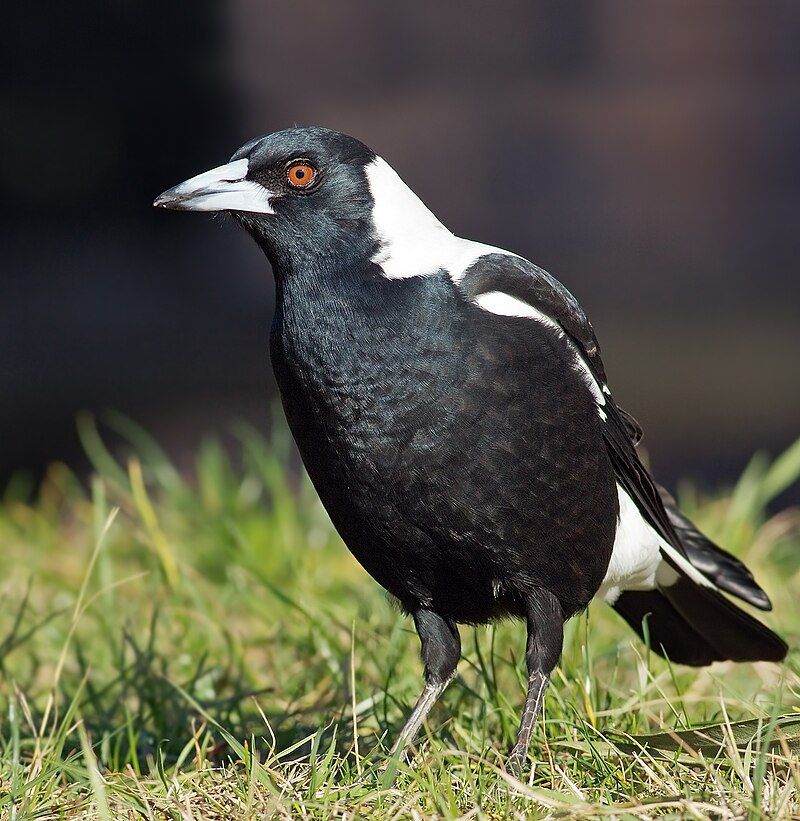
The Australian magpie is a unique bird native to Australia and southern New Guinea. It is distinguished from other species by its striking black and white coloring.
Historically, the Australian magpie was thought to be three separate species, but it is now known to be a single species with nine subspecies. Each of these subspecies has its own distinct characteristics, such as size, color, and habitat preference.
For instance, some subspecies are larger than others while some may have more black coloring than white or vice versa. The Australian magpie is a highly intelligent bird and is known to be able to mimic human speech.
It is also well-known for its beautiful singing and for its inquisitive behavior. The Australian magpie is an important part of the local ecosystem, as it aids in the dispersal of seeds and helps to control insect populations.
It is also a popular sight in many rural and urban areas and is a favorite of birdwatchers.
| Kingdom | Animalia |
| Phylum | Chordata |
| Class | Aves |
| Order | Passeriformes |
| Family | Artamidae |
| Genus | Gymnorhina |
| Species | G. tibicen |
2. Pied butcherbird
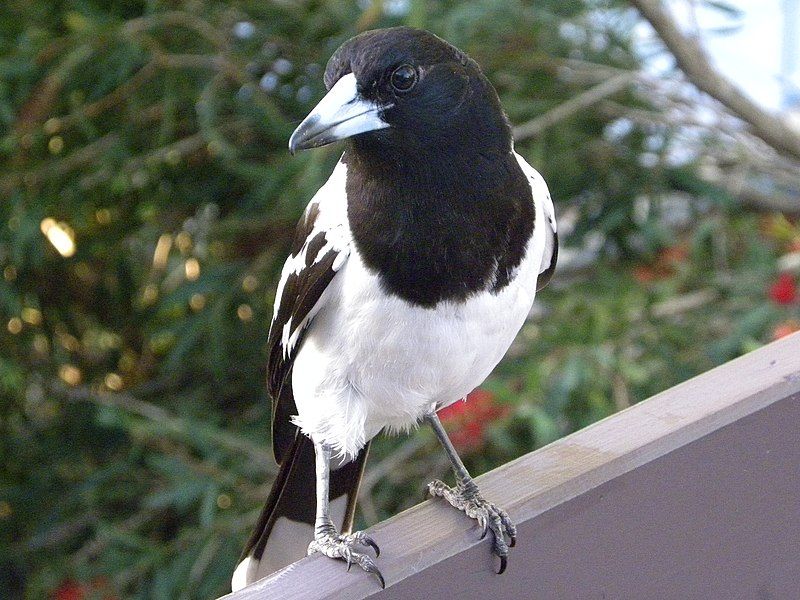
The pied butcherbird is a species of songbird native to Australia and was first described by John Gould in 1837. It is a medium-sized bird, measuring 28 to 32 cm in length, and is easily identifiable by its distinct black and white plumage.
The head and throat are completely black, giving the bird a hood-like appearance. The mantle and much of the tail and wings are also black, while the rest of the body is white.
Its most notable physical feature is its long, hooked bill, which is used for catching and killing its prey. This bird is an important predator in its habitat, helping to keep the population of small mammals, insects, and other birds in balance.
Due to its wide range and relative abundance, the pied butcherbird is a species of least concern to the International Union for Conservation of Nature.
| Kingdom | Animalia |
| Phylum | Chordata |
| Class | Aves |
| Order | Passeriformes |
| Family | Artamidae |
| Genus | Cracticus |
| Species | C. nigrogularis |
3. Magpie-lark
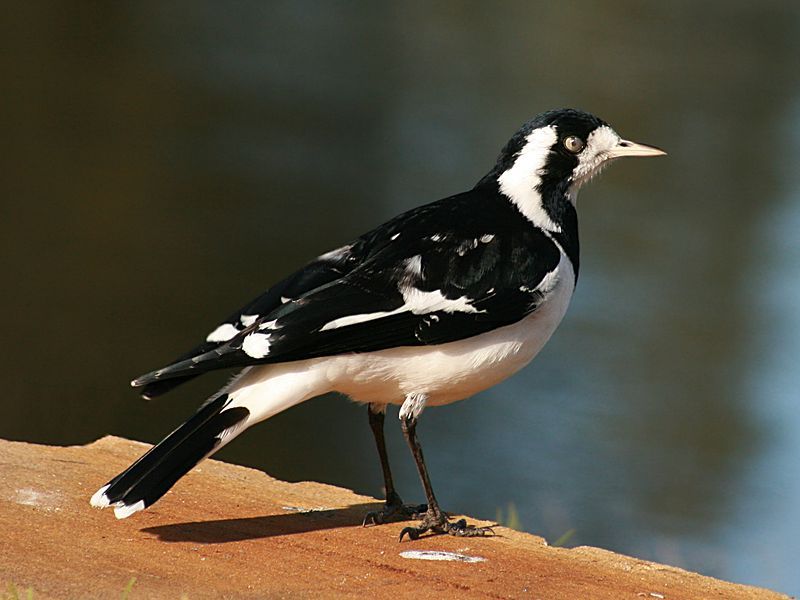
The magpie-lark is a passerine bird native to Australia, Timor, and southern New Guinea and is commonly known by various names such as wee magpie, peewee, peewit, mudlark, or Murray magpie.
This species has a unique appearance, with both males and females having black and white plumage. However, the patterns of the plumage vary between the sexes. The magpie-lark was first described by John Latham in 1801.
The magpie-lark is a medium-sized bird, with the males usually having a length of roughly 20 centimeters and the females measuring up to a maximum of 22 centimeters. They have a short tail, which is usually brown in color and is often kept in an upright position.
The head is mostly black, with white covering the front, sides, and back of the neck. The wings are black and white, and the underparts and the breast are mostly white. The magpie-lark has long, slender legs which are often grey in color.
The magpie-lark’s diet consists mainly of insects, as well as various fruits and seeds. It is also known to eat small lizards and other small animals. The species is usually found in open grassland and woodlands, near water bodies such as lakes and rivers.
They are also known to forage in urban areas. The magpie-lark is a social species and is often seen in pairs or small groups. They are also known to communicate with each other using a variety of vocalizations.
The magpie-lark is a common species, and its population is not currently in danger. They are a valuable part of the Australian ecosystems, as they help to control populations of insects and other small animals.
They are also beneficial to the environment, as they help to disperse seeds and fertilize the soil. The magpie-lark is a beautiful species, and its distinct black and white plumage makes it an interesting bird to observe.
| Kingdom | Animalia |
| Phylum | Chordata |
| Class | Aves |
| Order | Passeriformes |
| Family | Monarchidae |
| Genus | Grallina |
| Species | G. cyanoleuca |
4. Cracticus
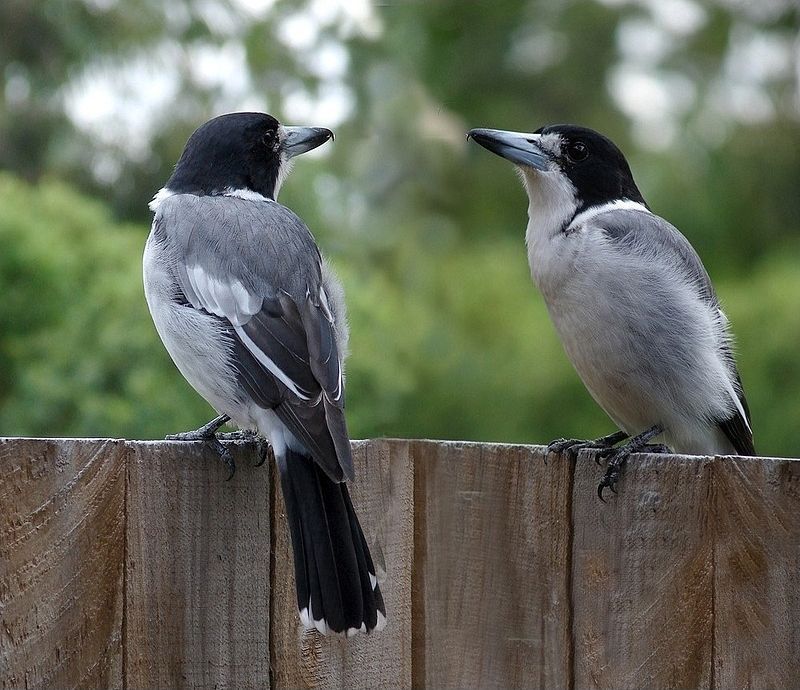
Cracticus is a genus of butcherbirds native to Australasia. Butcherbirds are a type of songbird that is known for their distinctive black-and-white coloration.
However, Cracticus species vary in their coloration, ranging from mostly black with added grey plumage to black-and-white. These birds are relatively large, usually between 30 and 40 cm in length.
They are found in a variety of habitats, including woodland, open forests, shrublands, and grasslands, and are omnivorous, eating a variety of insects, small reptiles, and some fruits.
Cracticus are also notable for their complex vocalizations, which involve a range of chirps, whistles, and other sounds.
| Kingdom | Animalia |
| Phylum | Chordata |
| Class | Aves |
| Order | Passeriformes |
| Family | Artamidae |
| Genus | Cracticus |
5. Australian white ibis
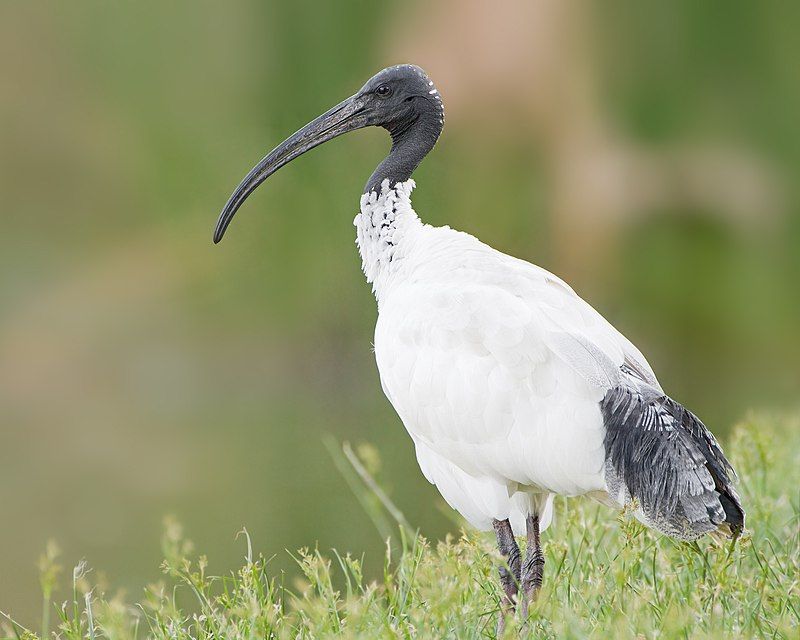
The Australian white ibis is a species of wading bird that belongs to the ibis family known as Threskiornithidae. This species is quite widespread across Australia, and it is easily recognizable due to its white plumage and black head, bill, and legs.
The ibis has a long, downcurved bill, which is a characteristic feature of this species. Its black legs and feet are also a distinctive feature that helps to distinguish it from other species of ibis.
This species is a common sight across much of Australia, and it is often seen wading in shallow waters or scavenging for food in open grasslands. They have also been known to inhabit wetlands, swamps, and other areas of water.
The Australian white ibis is an important part of the Australian ecosystem, as it helps to keep insect populations down and aids in the dispersal of seeds and other plant materials..
| Kingdom | Animalia |
| Phylum | Chordata |
| Class | Aves |
| Order | Pelecaniformes |
| Family | Threskiornithidae |
| Genus | Threskiornis |
| Species | T. molucca |
6. Oystercatchers
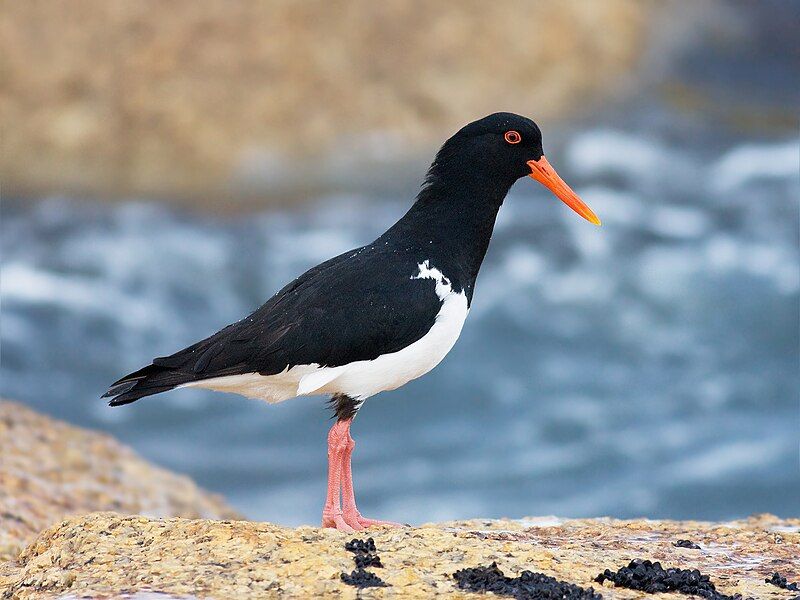
Oystercatchers are a family of birds belonging to the genus Haematopus. This family of birds is found all over the world, from the coasts of Europe to the coasts of South America, with the exception of the polar regions and some parts of Africa and South East Asia.
Generally speaking, these birds are found near bodies of water, where they can feed on oysters, mussels, crabs, and other small aquatic animals. They are easily identified by their striking black and white coloring, along with their long, bright orange beaks.
The oystercatchers are a unique family of wading birds, as they are the only birds in this genus. They are known to use their sharp beaks to open up shells in order to feed on the creatures living inside.
This behavior has earned them their name, as they are often seen feeding on oysters in particular. The oystercatcher family is a vital part of many coastal ecosystems, as they help to control the populations of other animals found in the sea.
They are also important predators of small mollusks, which can cause damage to other sea creatures and their habitats. Overall, oystercatchers are an important part of the global avian family.
Despite their limited range, they are a common sight in many coastal regions, and they play an integral role in the health of many aquatic ecosystems.
| Kingdom | Animalia |
| Phylum | Chordata |
| Class | Aves |
| Order | Charadriiformes |
| Family | Haematopodidae |
| Genus | Haematopus |
7. Adélie penguin
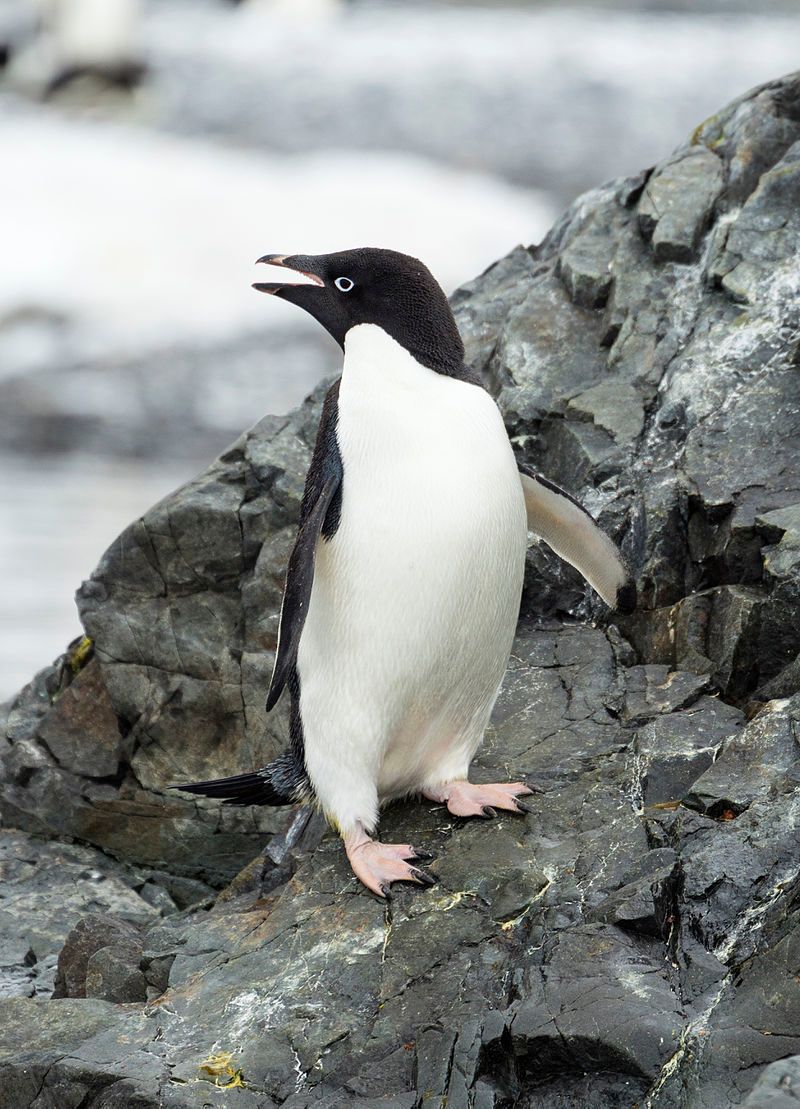
The Adélie penguin is a species of penguin that is found exclusively along the coast of Antarctica, making it the most widespread penguin species in the world.
It is also the most southerly distributed of all penguin species, living in the coldest regions of the Antarctic continent alongside the emperor penguin.
These penguins have adapted to extreme cold temperatures and harsh climates, and are able to survive in the most challenging conditions.
They are well-known for their distinctive black and white coloring, and for their ability to dive quickly and precisely into the ocean to feed on fish and krill.
Adélie penguins live in large colonies of hundreds or even thousands of birds and are essential for the health and balance of the Antarctic ecosystem.
| Kingdom | Animalia |
| Phylum | Chordata |
| Class | Aves |
| Order | Sphenisciformes |
| Family | Spheniscidae |
| Genus | Pygoscelis |
| Species | P. adeliae |
8. Kingfisher
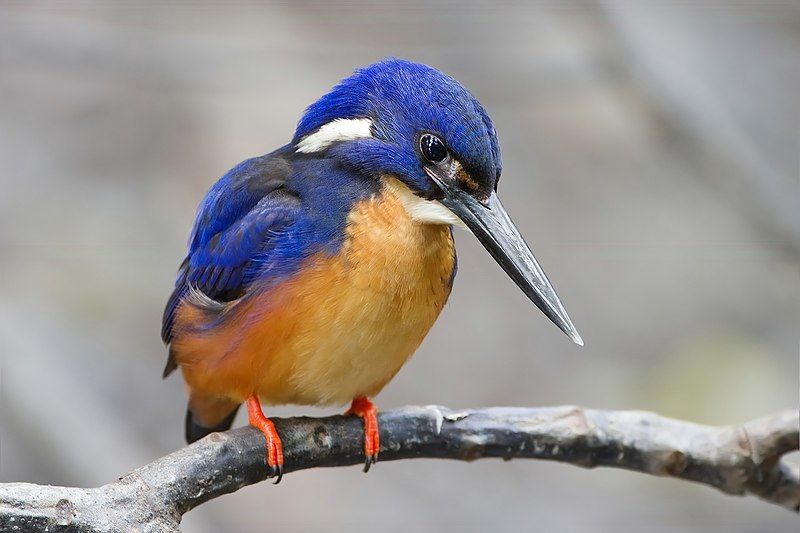
Kingfishers are a type of colorful bird found around the world. They belong to the family Alcedinidae and the order Coraciiformes. Kingfishers are considered to be small to medium-sized and these birds come in a variety of vibrant colors.
They are found mainly in tropical areas across Africa, Asia, and Oceania. However, there are also some species that can be seen in Europe. Kingfishers are usually found near bodies of water, such as rivers, lakes, and ponds.
They feed mostly on fish, but can also eat crustaceans, amphibians, and other small animals. These birds are known for their ability to hunt fish by diving into the water and catching them with their sharp beaks.
Kingfishers are also known for their bright plumage and loud calls. They are a favorite of birdwatchers, as their colorful feathers and distinctive calls make them easy to spot in their natural habitats.
These birds are also important to their local ecosystems, as they help to control insect and fish populations. Overall, Kingfishers are a unique and vibrant group of birds found in many parts of the world.
They have adapted to a variety of habitats and are important to their local ecosystems. Their bright colors and loud calls make them a favorite of birdwatchers everywhere.
| Kingdom | Animalia |
| Phylum | Chordata |
| Class | Aves |
| Order | Coraciiformes |
| Family | Alcedinidae |
9. Black-billed magpie
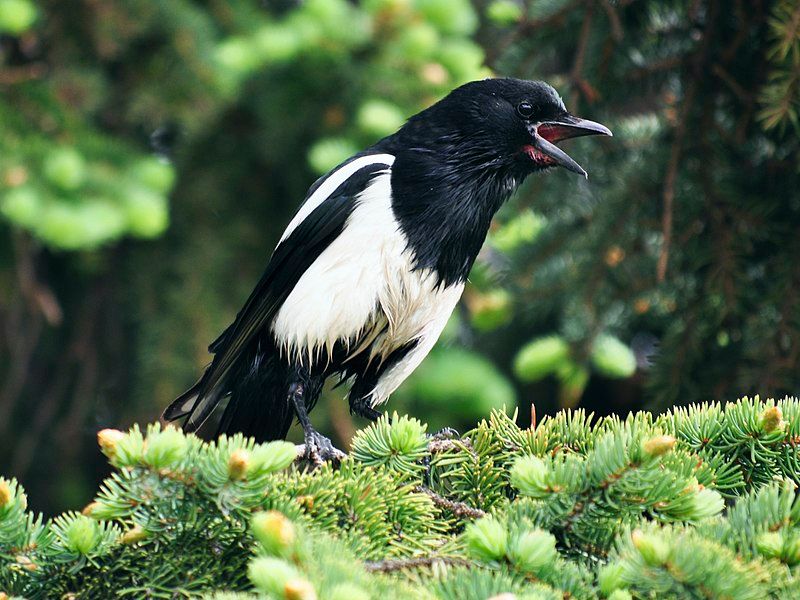
The black-billed magpie, also known as the American magpie, is a species of bird in the corvid family native to the western half of North America.
It is easily recognizable due to its distinctive black and white coloration, which is further highlighted by the black areas on the wings and tail, which shimmer with iridescent hints of blue or blue-green.
This bird species is known to inhabit forested areas, open woodlands, and even grasslands.
It is also commonly found in suburban areas and even cities, where it can be seen foraging for food in parks and gardens.The black-billed magpie is omnivorous, meaning it will consume both plant and animal matter.
Its diet can consist of insects, small animals, eggs, fruits, nuts, seeds, and carrion. It is also known to take advantage of human-provided food sources such as picnics and garbage.
This species of bird is known to be quite vocal and will often sing and chatter both to communicate with its flock and to defend its territory.The black-billed magpie is an important part of the North American ecosystem, as it helps to control insect populations, disperse seeds, and scavenge carrion.
It is also an important symbol in many Native American cultures, often associated with birth and renewal. Unfortunately, the black-billed magpie population is declining due to habitat destruction and its vulnerability to pesticides.
Conservation efforts are underway to protect this species and ensure its future survival..
| Kingdom | Animalia |
| Phylum | Chordata |
| Class | Aves |
| Order | Passeriformes |
| Family | Corvidae |
| Genus | Pica |
| Species | P. hudsonia |
10. Black-winged stilt
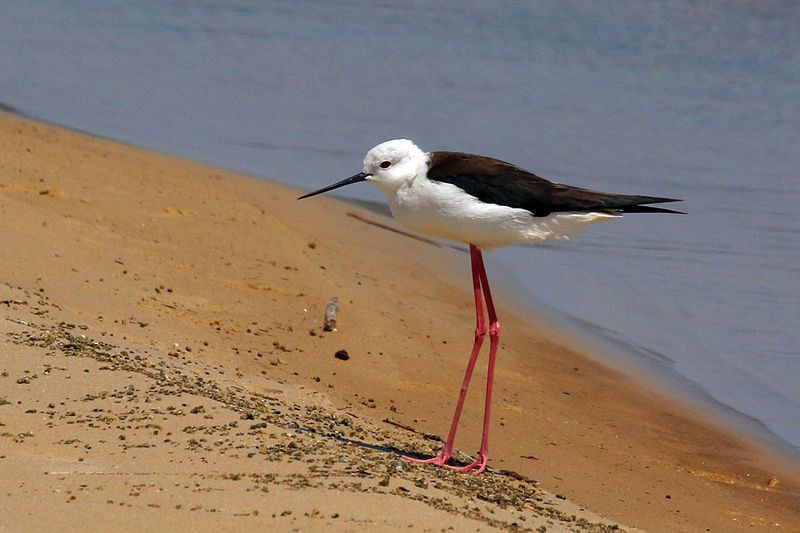
The black-winged stilt is a long-legged wading bird that is part of the avocet and stilt family. This species is widely distributed and can be found in most parts of the world. Its scientific name is H. himantopus.
This species is often considered to be a single, almost cosmopolitan species, due to its widespread range and population. The black-winged stilt is a distinctive bird, with its long, slender legs, slender red bill, and black and white plumage.
The bird’s legs are very long, measuring up to 32 cm (12.6 inches). The wings are black, with white wingtips, and the body is white with a black back. The bird also has a long, pointed black tail.The black-winged stilt is a wader, meaning it feeds in shallow water.
Its diet consists mainly of small crustaceans, insects, and aquatic plants. The bird is usually found in wetlands, such as marshes, rivers, and shallow lakes.The black-winged stilt is an important part of the avocet and stilt family.
This species is an important part of the ecosystem, as it helps keep the ecosystem healthy by eating small crustaceans and insects. The bird is also important to humans, as it is a popular bird for birders and photographers.
The black-winged stilt is a beautiful bird and an important part of the avian world.
| Kingdom | Animalia |
| Phylum | Chordata |
| Class | Aves |
| Order | Charadriiformes |
| Family | Recurvirostridae |
| Genus | Himantopus |
| Species | H. himantopus |
11. Intermediate egret
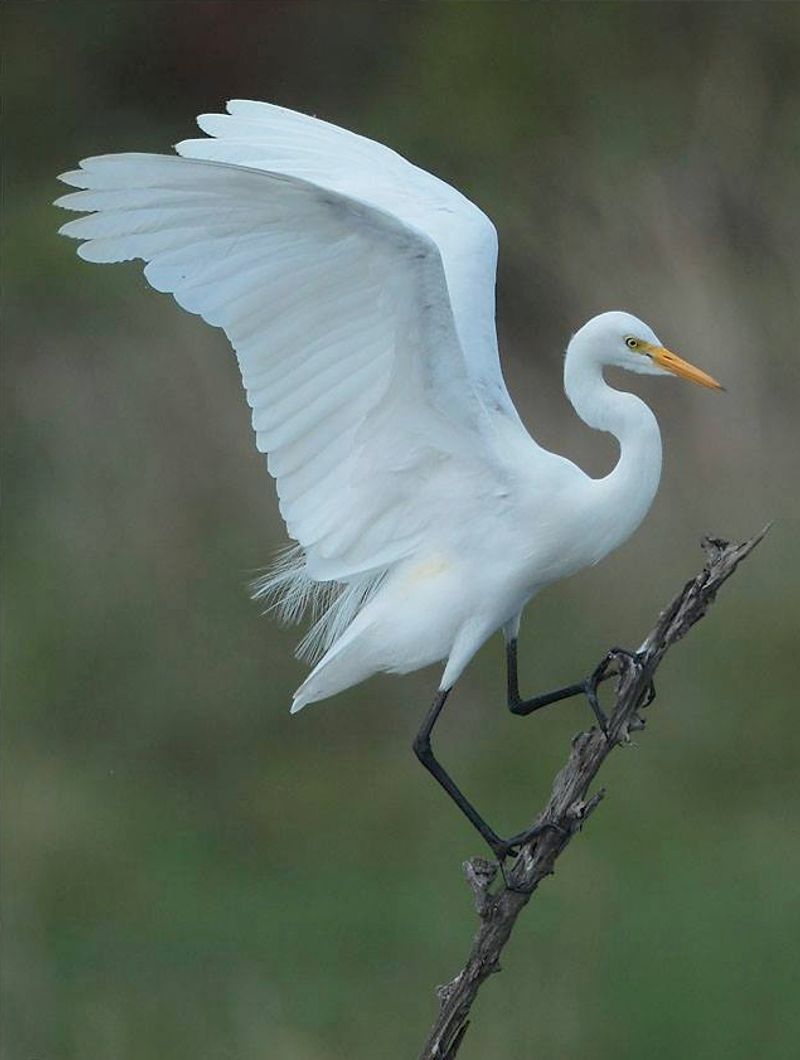
The Intermediate Egret, also known as the Median Egret, Smaller Egret, or Yellow-Billed Egret, is a medium-sized heron species that can be found in a variety of locations across the world.
It is a resident breeder, meaning it stays in the same area all year round, and it is found in East Africa, the Indian subcontinent, Southeast Asia, and Australia.
Taxonomists have debated over the exact genus of this species, with some putting it in the genus Egretta and others in Mesophoyx. The Intermediate Egret is relatively small in size, with a yellow bill, a white body, and long black legs.
It typically feeds on small fish, amphibians, and other small creatures in wetlands, marshes, and other areas of shallow water. Its feathers are often used in traditional ceremonies and ornamental decorations, and its population is currently stable.
| Kingdom | Animalia |
| Phylum | Chordata |
| Class | Aves |
| Order | Pelecaniformes |
| Family | Ardeidae |
| Genus | Ardea |
| Species | A. intermedia |
12. Eurasian coot
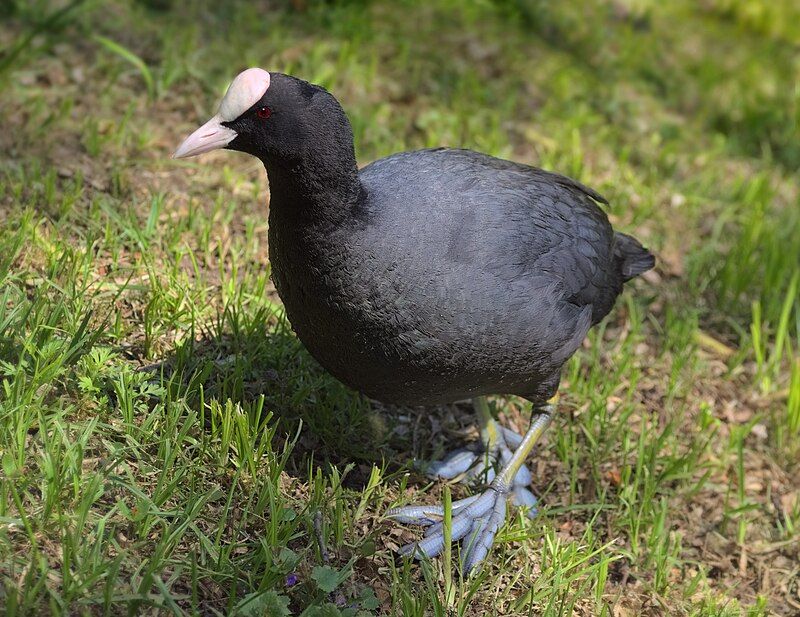
The Eurasian coot, sometimes known as the common coot or Australian coot, is a species of rail and crake bird that is found in a variety of regions across the world.
It is a member of the Rallidae family and can be found throughout Europe, Asia, Australia, New Zealand, and parts of North Africa.
The Eurasian coot is easily recognizable due to its distinct appearance; it has a slaty-black body, a glossy black head, and a white bill with a white frontal shield. This species is generally quite social, and can often be found in large flocks around water sources.
It primarily feeds on aquatic plants, although it also eats insects, snails, and small fish. The Eurasian coot is a successful species, and its population is currently stable in most areas.
| Kingdom | Animalia |
| Phylum | Chordata |
| Class | Aves |
| Order | Gruiformes |
| Family | Rallidae |
| Genus | Fulica |
| Species | F. atra |
Conclusion:
The Australian black and white birds are a diverse group of species that provide a variety of habitats and services to their local ecosystems. They are an integral component of the Australian landscape and contribute to the sustainability of the environment.
As a result, these species should be protected and conserved, as they are a valuable part of Australia’s biodiversity.